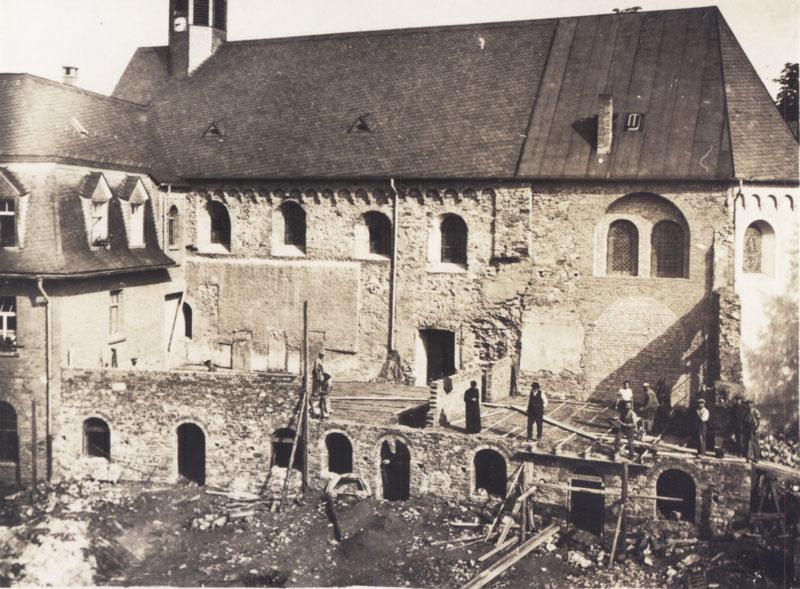Marienhausen
History
MarienKirche is part of the Marienhausen Convent, which is the oldest and only completely preserved Cistercian convent in the Rheingau area. The first document mentioning the nunnery dates back to 1189. Seemingly however, the convent is even older. The Archbishop of Mainz consecrated the convent church in 1219. In the course of the 13th century, the convent received several letters of Papal protection. The designation Marienhausen became established in the second half of the 16th century.
Whereas MarienKirche itself was preserved in its original 12th-century form right up until the present day, the convent church was rebuilt in the 18th century. At any rate, when, in 1803, the Rheingau was ceded to the Duchy of Nassau, Marienhausen’s orderly financial affairs were good enough for the ducal inspectors to exempt it from the secularization process, something that cannot be said of Kloster Eberbach. It was not until February 1811 that in a second wave of secularization Duke Friedrich August closed the convent. In return for appropriate compensation not only the abbess and the prioress but also eight nuns and three lay sisters were relieved of their duties at the convent.
The convent complex was subsequently sold to Baron Hans Carl von Zwierlein in Geisenheim. The Diocese of Limburg acquired the building in 1888. In 1889 the Poor Handmaids of Jesus Christ transferred their diocesan sanctuary, “Zum Heiligen Josef”, administered by Prelate Matthäus Müller, from Marienstatt in the Westerwald region to the former convent. The complex then served as a juvenile correction facility for up to 200 boys and young men.
In 1915 a fire seriously damaged the convent. In 1924 the Salesians of Don Bosco established a monastic community, took over the home for children and young men and, amongst other things, rebuilt the church in the style of the Liturgical Movement.
As part of the latest renovation work (as of 2010) the original Romanesque/Gothic structure was restored in the spirit of the Cistercians. The art was provided by intellectually disabled artists, in line with the institution’s caritative history. A relic of the blessed Maria Katharina Kasper, the founder of the Poor Handmaids of Jesus Christ, was set in the new altar.
The convent was placed under the protection of the Hague Convention in 2008.
Marienkirche, reconstruction after the fire, around 1920, archives R. Nägler

- 1 of 4
- ››



